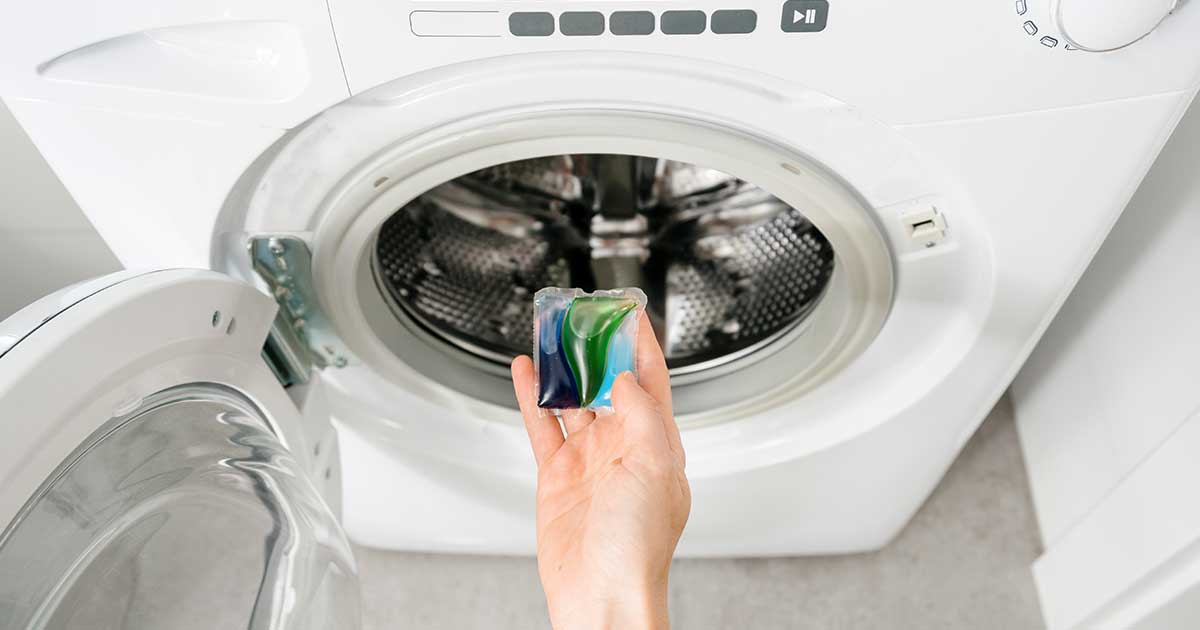True Cellular Formulas Team - April 08, 2024
The Unseen Dangers of Tide Pods
A Deep Dive into Their Toxicity

In recent years, the convenience of laundry detergent pods has revolutionized the way we approach one of the most mundane household chores: laundry. Among these, Tide Pods have become a household name, symbolizing both efficiency and innovation in cleaning. However, a recent revelation on the TODAY Show by Adrian Grenier has cast a shadow over the safety and environmental impact of these colorful capsules. Unlike the common apprehensions about the toxic chemicals and fragrances they contain, Grenier's concern lies with the material that encases these detergents - a form of dissolvable plastic that's far from harmless.
The Plastic Problem
The encapsulation of detergent in what is often marketed as "dissolvable plastic" is misleading. This plastic does not truly dissolve in the ecological sense but rather breaks down into smaller particles, known as microplastics.[1] These particles are a growing concern for environmentalists, as they integrate into water systems, the broader environment, and eventually, the food chain, leading to inadvertent consumption by humans and animals alike.[2] The process by which Tide Pods disintegrate contributes to this pollution, contradicting the clean image portrayed by their vibrant aesthetics and purported convenience.
Beyond the Surface: Chemical Concerns
While the plastic problem is substantial, it's crucial not to overlook the contents within these pods. The chemicals and fragrances packed into each pod pose significant health risks.[3] Research has increasingly linked exposure to certain synthetic chemicals found in household cleaning products to hormonal imbalances and damage to vital organs.[4] These substances, once thought to be a trade-off for unparalleled cleaning power, are now being scrutinized for their long-term effects on human health and the environment.
The Myth of Safe Degradation
One of the selling points of Tide Pods and similar products has been their supposed safe and complete degradation. However, evidence suggests that the narrative of "safe" biological degradation is more myth than reality. Instead of disappearing harmlessly, the components of these pods—both plastic and chemical—linger, contributing to environmental degradation and posing risks to water quality and ecosystem health.
Alternatives to Consider
The spotlight on the issues surrounding Tide Pods by public figures like Adrian Grenier serves as a wake-up call to consumers. It's a prompt to reconsider our choices and seek out safer, more sustainable alternatives. Numerous non-toxic laundry solutions exist that do not compromise the environment or our health for the sake of convenience. These alternatives range from biodegradable detergent sheets to plant-based liquid detergents that are free from harsh chemicals and synthetic fragrances.
Embracing a Non-Toxic Lifestyle
Transitioning to non-toxic laundry solutions is a step toward a healthier lifestyle and a more sustainable planet. Consumers are encouraged to research and select products that align with these values, ensuring that their cleaning habits do not have unintended harmful consequences. As we move forward, let's engage in discussions and share knowledge about non-toxic living, from laundry hacks to broader lifestyle changes, fostering a community committed to environmental stewardship and well-being.
The controversy surrounding Tide Pods underscores a larger conversation about the impact of our everyday choices. By opting for non-toxic and environmentally friendly alternatives, we can collectively contribute to a cleaner, safer world. Your voice and choices matter—join the conversation and share your non-toxic living tips in the comments below. Together, we can make a difference.
- Does the Film around Detergent Pods Really Biodegrade? A Debate ..., www.washingtonpost.com/climate-solutions/2022/11/15/laundry-detergent-pod-plastic-pva/. Accessed 14 Mar. 2024.
- US Department of Commerce, National Oceanic and Atmospheric Administration. “What Are Microplastics?” NOAA’s National Ocean Service, 13 Apr. 2016, oceanservice.noaa.gov/facts/microplastics.html. Accessed 14 Mar. 2024.
- Rádis-Baptista G. Do Synthetic Fragrances in Personal Care and Household Products Impact Indoor Air Quality and Pose Health Risks? J Xenobiot. 2023 Mar 1;13(1):121-131. doi: 10.3390/jox13010010. PMID: 36976159; PMCID: PMC10051690.



